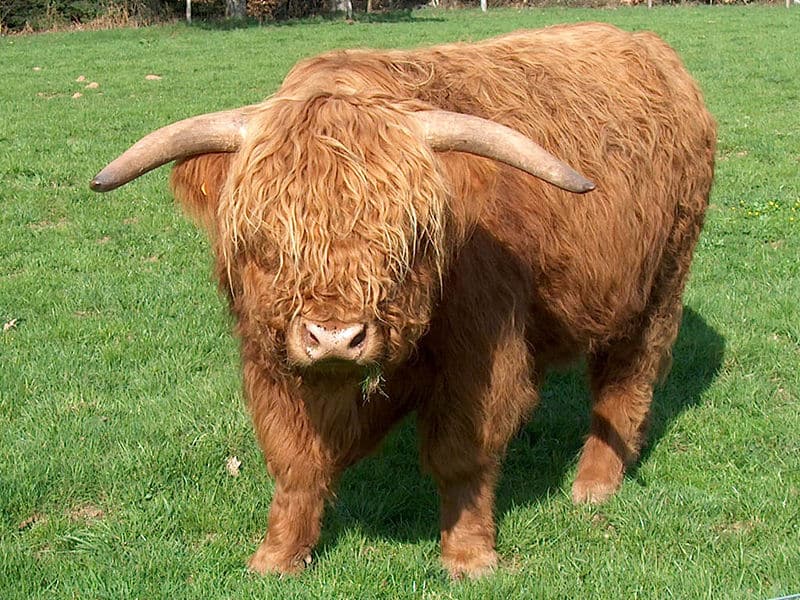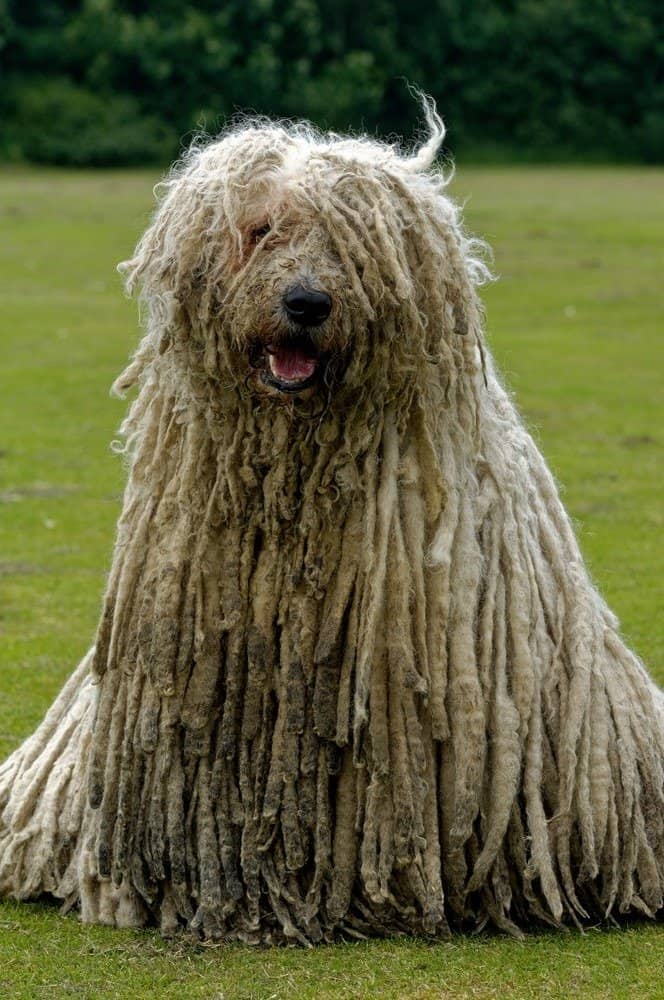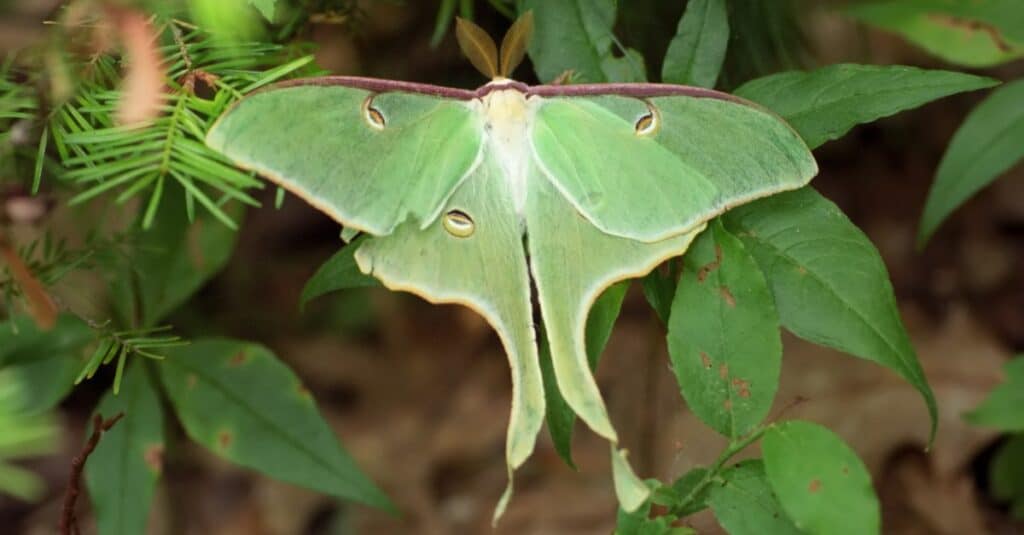The 10 Hairiest Animals In The World
Many millions of animals in the world have hair and for some it’s essential to their survival as they need it for warmth. However, some animals have much more hair than others, including some we wouldn’t even expect. Here we’ll discover the hairiest animals in the world, including a dog that uses its coat to blend in with sheep.
Highland Cattle

Mahaba – Public Domain
Originating in the Scottish Highlands, Highland cattle are some of the most impressive cattle around, and the hairiest. Well known for their majestic horns, Highlands have been around for centuries and are one of the oldest recorded breeds. Their main – and original – coat color is a rich red and is thick, long, and wavy. Highland cattle need their heavy coat to protect them from the elements in their native Scotland and it consists of two layers. The bottom layer is downy while the outer is long and oily. Highland cattle also use their horns for foraging in the snow. Although they have now been imported into many countries across the world, Highlands were originally used as house cows by many small farmers as they provided plenty of milk and meat for the family.
Angora Rabbit

Rita_Kochmarjova/Shutterstock.com
Angora rabbits are one of the oldest types of domestic rabbit in the world. They are famed for their incredibly soft, downy fur which is known as Angora wool. Angoras originated in a region of present-day Turkey before they were brought to France in 1723. Their wool is incredibly soft and silky and is known for its similarity to cashmere. The wool on healthy adult rabbits can grow approximately 1.2 inches per month. Angoras require regular grooming to prevent their wool from becoming matted as it can cause discomfort or even infection. Most Angoras need to either be plucked (a process that involves removing the naturally shed fibers) or sheared every 90 to 120 days. This is to prevent a life threatening illness which is caused by them ingesting wool when they groom themselves.
Silkie

iStock.com/westcott
Although Silkies have feathers not hair they still make the list due to their incredibly soft and fluffy plumage. Also known as Chinese chickens, these small birds are so soft they are often described as feeling like silk or satin to the touch. It’s unknown exactly where they originated but they are extremely popular birds. Their calm nature makes them ideal even for small-scale poultry owners. Although they don’t lay every day, they are extremely good mothers due to their broody nature and often hatch out eggs belonging to much bigger birds – such as ducks or geese. Silkies are mainly either black, white, or buff and are usual as they have five toes on each foot instead of the traditional four.
Musk Ox

Fitawoman/Shutterstock.com
Musk ox are native to northern Canada and Greenland and have been reintroduced to Alaska, Norway, Russia, and Sweden. These unusual herbivores are more closely related to sheep and goats than oxen and have the longest hair of any animal, reaching almost 40 inches. Musk ox have a thick, dark coat and curved horns on each side of their head, giving them an intimidating appearance. They have two layers of hair and the inner hair is called “qiviut” which is an extremely soft layer of wool. This super-soft layer is shed each spring and is softer and warmer than sheep’s wool. Their outer layer is made up of long guard hairs to protect them from the harsh Arctic conditions and its length gives them an extremely shaggy appearance.
Afghan Hound

Originating in Afghanistan, Afghan hounds are best known for their extremely long, silky hair. They have been bred for their thick coat so that they can survive in the cold mountain regions. Their coat can be any color and, although it is thick, it is extremely soft and fine. Much like our own hair, the hair on Afghan hounds constantly grows and so requires regular trimming. Afghan hounds are known as sighthounds. This means they can hunt using their excellent eyesight and speed, rather than relying on their sense of smell. Afghan hounds are known for having an aloof and dignified temperament.
Komondor

Colin Seddon/Shutterstock.com
Also known as Hungarian sheepdogs, Komondors are from Hungary and have been declared as one of the country’s national treasures that must be protected. Komondors are large white dogs that have corded hair which is why they are also frequently referred to as “mops”. Their hair can be around 10 inches long and is one of the heaviest coats in the dog world. Komondors are most often used as livestock guardian dogs to protect livestock from predators. They have the ability to think and make their own decisions and are capable of driving away bears and wolves. Their thick coat is essential to protect them from cold, predators, and vegetation. Komondors shaggy white coat also helps them blend in with flocks of sheep and allows them to remain undetected while awaiting predators.
Norwegian Forest Cat

Norwegian forest cats are domestic cats that originated in Europe. They are large cats with a bushy tail and long legs and have a friendly and intelligent nature. Norwegian forest cats have adapted to the cold climate that they live in and have a thick coat that has two layers. They have a dense and woolly undercoat that provides them with insulation and a long and glossy outer layer. Their top coat is extremely thick and water-repellent to help them survive outdoors.
Sea Otter

Sea otters are known to have the thickest fur of any animal and have around 900 million hairs on their bodies. They are one of the smallest marine mammals but are also the heaviest member of the weasel (Mustelidae) family. Although they are capable of living entirely in the ocean, sea otters can walk on land as well. Unlike other marine mammals, sea otters don’t have a layer of blubber (fat) to protect them. This means that they rely entirely on their fur to keep them warm in the cold water and is why they need to have such a thick coat. Sea otters are native to the coasts of the North Pacific ocean and, although their numbers were once great, they are now an endangered species.
Spotted Apatelodes

Millie Bond – Copyright A-Z Animals
Spotted Apatelodes are extremely unusual as they are incredibly hairy in both the caterpillar and moth stage. These fascinating insects are found across the US, Canada, and Mexico. Caterpillars are completely covered in hair and are white when they are young and a bright yellow when they are older. In this stage they also have long black tufts that extend from behind their head and another at the rear of the caterpillar. When they are moths, spotted apatelodes are covered in thick, fuzzy hair and have a black spot on each forewing. When resting their body curves upwards which gives the impression of it doing a handstand.
Luna Moth

iStock.com/ArendTrent
Incredibly, Luna moths are one of the hairiest animals and have almost 10 billion hairs on their bodies. They are one of the largest moths found in North America, with an average wingspan of 4.5 inches. Luna moths have lime green wings and white bodies and are a member of the silk moth family. They have a thick array of hair-like scales that are water repellent which means that dirt and water just roll off them. Luna moths have no mouth or digestive system. This means they don’t eat as adults and they actually only live for one week.
More from A-Z Animals
Many millions of animals in the world have hair and for some it’s essential to their survival as they need it for warmth. However, some animals have much more hair than others, including some we wouldn’t even expect. Here we’ll discover the hairiest animals in the world, including a dog that uses its coat to blend in with sheep.
Highland Cattle

Mahaba – Public Domain
Originating in the Scottish Highlands, Highland cattle are some of the most impressive cattle around, and the hairiest. Well known for their majestic horns, Highlands have been around for centuries and are one of the oldest recorded breeds. Their main – and original – coat color is a rich red and is thick, long, and wavy. Highland cattle need their heavy coat to protect them from the elements in their native Scotland and it consists of two layers. The bottom layer is downy while the outer is long and oily. Highland cattle also use their horns for foraging in the snow. Although they have now been imported into many countries across the world, Highlands were originally used as house cows by many small farmers as they provided plenty of milk and meat for the family.
Angora Rabbit

Rita_Kochmarjova/Shutterstock.com
Angora rabbits are one of the oldest types of domestic rabbit in the world. They are famed for their incredibly soft, downy fur which is known as Angora wool. Angoras originated in a region of present-day Turkey before they were brought to France in 1723. Their wool is incredibly soft and silky and is known for its similarity to cashmere. The wool on healthy adult rabbits can grow approximately 1.2 inches per month. Angoras require regular grooming to prevent their wool from becoming matted as it can cause discomfort or even infection. Most Angoras need to either be plucked (a process that involves removing the naturally shed fibers) or sheared every 90 to 120 days. This is to prevent a life threatening illness which is caused by them ingesting wool when they groom themselves.
Silkie

iStock.com/westcott
Although Silkies have feathers not hair they still make the list due to their incredibly soft and fluffy plumage. Also known as Chinese chickens, these small birds are so soft they are often described as feeling like silk or satin to the touch. It’s unknown exactly where they originated but they are extremely popular birds. Their calm nature makes them ideal even for small-scale poultry owners. Although they don’t lay every day, they are extremely good mothers due to their broody nature and often hatch out eggs belonging to much bigger birds – such as ducks or geese. Silkies are mainly either black, white, or buff and are usual as they have five toes on each foot instead of the traditional four.
Musk Ox

Fitawoman/Shutterstock.com
Musk ox are native to northern Canada and Greenland and have been reintroduced to Alaska, Norway, Russia, and Sweden. These unusual herbivores are more closely related to sheep and goats than oxen and have the longest hair of any animal, reaching almost 40 inches. Musk ox have a thick, dark coat and curved horns on each side of their head, giving them an intimidating appearance. They have two layers of hair and the inner hair is called “qiviut” which is an extremely soft layer of wool. This super-soft layer is shed each spring and is softer and warmer than sheep’s wool. Their outer layer is made up of long guard hairs to protect them from the harsh Arctic conditions and its length gives them an extremely shaggy appearance.
Afghan Hound

Originating in Afghanistan, Afghan hounds are best known for their extremely long, silky hair. They have been bred for their thick coat so that they can survive in the cold mountain regions. Their coat can be any color and, although it is thick, it is extremely soft and fine. Much like our own hair, the hair on Afghan hounds constantly grows and so requires regular trimming. Afghan hounds are known as sighthounds. This means they can hunt using their excellent eyesight and speed, rather than relying on their sense of smell. Afghan hounds are known for having an aloof and dignified temperament.
Komondor

Colin Seddon/Shutterstock.com
Also known as Hungarian sheepdogs, Komondors are from Hungary and have been declared as one of the country’s national treasures that must be protected. Komondors are large white dogs that have corded hair which is why they are also frequently referred to as “mops”. Their hair can be around 10 inches long and is one of the heaviest coats in the dog world. Komondors are most often used as livestock guardian dogs to protect livestock from predators. They have the ability to think and make their own decisions and are capable of driving away bears and wolves. Their thick coat is essential to protect them from cold, predators, and vegetation. Komondors shaggy white coat also helps them blend in with flocks of sheep and allows them to remain undetected while awaiting predators.
Norwegian Forest Cat

Norwegian forest cats are domestic cats that originated in Europe. They are large cats with a bushy tail and long legs and have a friendly and intelligent nature. Norwegian forest cats have adapted to the cold climate that they live in and have a thick coat that has two layers. They have a dense and woolly undercoat that provides them with insulation and a long and glossy outer layer. Their top coat is extremely thick and water-repellent to help them survive outdoors.
Sea Otter

Sea otters are known to have the thickest fur of any animal and have around 900 million hairs on their bodies. They are one of the smallest marine mammals but are also the heaviest member of the weasel (Mustelidae) family. Although they are capable of living entirely in the ocean, sea otters can walk on land as well. Unlike other marine mammals, sea otters don’t have a layer of blubber (fat) to protect them. This means that they rely entirely on their fur to keep them warm in the cold water and is why they need to have such a thick coat. Sea otters are native to the coasts of the North Pacific ocean and, although their numbers were once great, they are now an endangered species.
Spotted Apatelodes

Millie Bond – Copyright A-Z Animals
Spotted Apatelodes are extremely unusual as they are incredibly hairy in both the caterpillar and moth stage. These fascinating insects are found across the US, Canada, and Mexico. Caterpillars are completely covered in hair and are white when they are young and a bright yellow when they are older. In this stage they also have long black tufts that extend from behind their head and another at the rear of the caterpillar. When they are moths, spotted apatelodes are covered in thick, fuzzy hair and have a black spot on each forewing. When resting their body curves upwards which gives the impression of it doing a handstand.
Luna Moth

iStock.com/ArendTrent
Incredibly, Luna moths are one of the hairiest animals and have almost 10 billion hairs on their bodies. They are one of the largest moths found in North America, with an average wingspan of 4.5 inches. Luna moths have lime green wings and white bodies and are a member of the silk moth family. They have a thick array of hair-like scales that are water repellent which means that dirt and water just roll off them. Luna moths have no mouth or digestive system. This means they don’t eat as adults and they actually only live for one week.






